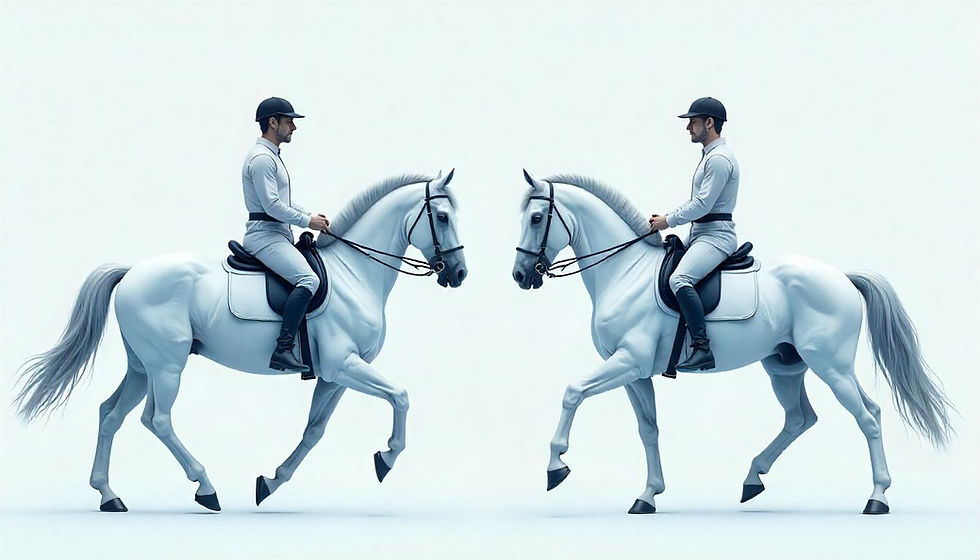The interactions involved in horseback riding : effects of the rider on equine spinal kinematics and the saddle
- cao870
- May 12
- 2 min read
Horseback riding is a unique discipline based on the symbiosis between human and animal, the rider, the horse, the saddle, and the environment. All of these elements contribute to both the performance and the well-being of the horse-rider pair. This article aims to explore in depth how the rider’s actions affect the kinematics of the equine spine and the adjustment of the saddle.

How does the rider influence the horse’s back movement ?
The rider plays a crucial role in the horse's dynamics. Their posture, weight, and movements directly impact the horse's locomotion and health. A study has highlighted that the rider influences not only the horse's back movement under the saddle but also the mobility of its limbs.
Rider positions and their effects
Full seat : the rider maintains constant contact with the saddle. This position increases pressure on the horse's back, particularly in the intermediate and caudal regions.
Posting trot : at each stride, the rider rises slightly out of the saddle, reducing pressure on the horse's back and allowing greater freedom of movement.
Two-point position : the rider hovers slightly above the saddle, perfectly balanced on the stirrups, minimizing impact on the horse’s back. This is a common position in show jumping.
The importance of the rider’s seat
The rider’s seat is critical for :
Their own balance.
The load applied to the horse's back.
The quality of communication between horse and rider.
A study showed that the rider’s ability influences the kinematics of their own spine, which has consequences for the horse.
What is the role of the saddle in the rider-horse interaction ?
Acting as an interface between horse and rider, the saddle must suit both their morphologies to ensure optimal comfort and performance.
Consequences of a poorly fitted saddle
An ill-fitting saddle can cause :
Pain and stiffness in the horse.
Lameness or muscular asymmetries.
Defensive behavior during girthing or mounting.
It is therefore essential to regularly check the saddle fit.
Influence of the saddle on horse locomotion
The tree, the core structure of the saddle, plays a key role in distributing the rider’s weight. A study showed that a saddle adapted to the horse-rider pair can improve the horse’s locomotion.
How can the rider improve equine spinal kinematics ?
To optimize spinal kinematics, the rider should :
Adjust their position according to the horse’s gait and the exercise at hand.
Maintain a stable seat to follow the horse’s movements.
Use a saddle suited to both their morphology and that of their horse.
Collaborate with professionals (such as equestrian ergonomists) to fine-tune equipment and performance.
Conclusion
The interaction between rider, horse, and saddle is key to harmonious riding. Rider posture and saddle fit are crucial factors for the horse’s health and performance. Ensuring proper alignment of these elements is vital for the comfort and efficiency of the rider-horse pair.
Key takeaways :
The rider’s position and movements directly affect the horse’s back.
A properly fitted saddle is essential for comfort and performance.
Working with professionals can enhance the harmony between rider, horse, and saddle.

